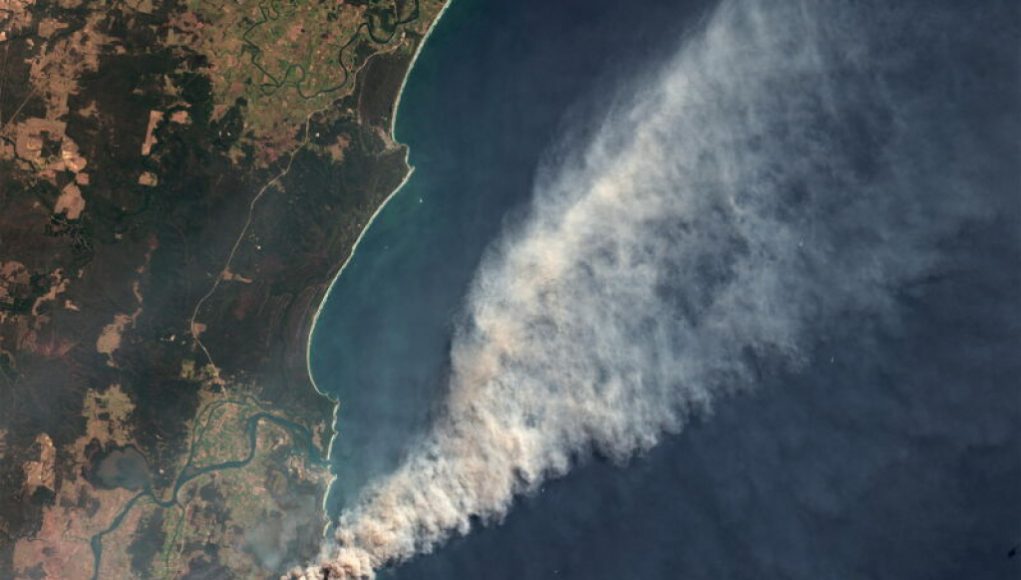The aftermath of the devastating wildfires that ravaged Australia in 2019 and 2020 had far-reaching effects that scientists are only just beginning to understand. According to a new study published in Science Advances, the aerosol fallout from the fires was so widespread that it brightened a vast area of clouds above the subtropical Pacific Ocean. This, in turn, caused the ocean surface and atmosphere to cool, shifting a key tropical rainfall belt northward and nudging the Equatorial Pacific toward an unexpected and long-lasting cool phase of the La Niña-El Niño cycle.
Aerosols from wildfires are essentially microscopic bits of charred mineral or organic matter that can ride super-heated wildfire clouds up to the stratosphere and spread across hemispheres with varied climatic effects. In this case, the aerosols from the Australian wildfires made clouds over the tropical Pacific reflect more sunlight back toward space, resulting in a cooling effect equivalent to switching off a 3-watt light bulb over every square meter of the ocean region. This cooling shifted the cloud and rain belt called the Intertropical Convergence Zone northward, which may have helped trigger the rare three-year La Niña from late 2019 through 2022.
The impacts of the La Niña were felt around the world, intensifying drought and famine in Eastern Africa and priming the Atlantic Ocean region for hurricanes. The findings of the study highlight the widespread multi-year climate impacts caused by an unprecedented wildfire season. Such large-scale interactions between wildfire aerosols and the climate may become more prevalent under climate change as wildfires are projected to intensify and become more frequent.
The new research is valuable because it highlights how ecosystem changes and disruptions on land can affect the ocean and atmosphere. As NCAR climate scientist Stephen Yeager notes, the link to climate change is kind of hidden in there. The wildfires set off a chain of events that lead to cooling in the eastern Pacific, and we can expect more of this in the future as wildfire emissions are projected to go up. We expect Australia to get drier, and for these wildfires to get worse.
Recent bushfires in Australia have resulted in a three-year “Super La Niña” event, scientists have discovered. As the intense wildfires in Australia have created a thick blanket of smoke that has traveled across the Southern Hemisphere, this smoke is believed to be a major cause of a sharp cooling in the central and eastern tropical Pacific Ocean. This cooling is a phenomenon known as a “La Niña” event, and scientists are now referring to the ongoing episode as a “Super La Niña” due to its extended length and sheer intensity.
Scientists from the International Research Institute for Climate and Society at Columbia University first reported the discovery in a paper published in the journal Nature Communications. According to the research team, this is the first time that a major La Niña event has been linked to wildfire smoke from a single source. The sharp cooling event in the Pacific Ocean, caused by particles from the wildfire smoke entered the atmosphere, can have drastic impacts on global weather patterns.
David Rind, a scientist on the research team and director of climate science at the institute, said, “What we’re seeing now is a dramatic tropical cooling, associated with the events in Australia that has been so extraordinary that it hasn’t just reversed El Niño but is down into the realm of a Super La Niña.”
Previous research has found that when large fires occur, smoke particles can enter the stratosphere and travel great distances. By gathering data on both the effects of the fires in Australia as well as the current La Niña event, the researchers were able to make the link. It’s expected that the La Niña event will continue until at least mid-2022.
With the bushfires in Australia being one of the worst natural disasters in recent memory, this research helps to bring light to the long-term implications of the devastation caused. Although the exact magnitude of the impacts is yet to be seen, climate scientists believe that this Super La Niña event will likely have a wide range of serious environmental impacts around the world.




















